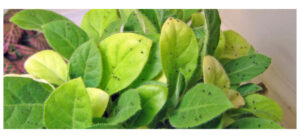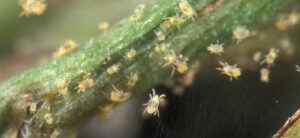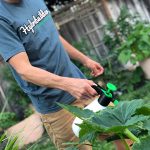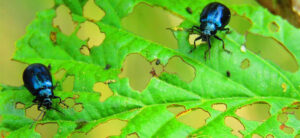Russet mites, or russet mite aculops, are microscopic pests that can wreak havoc on various plants. They can cause significant damage to crops such as tomatoes and hemp. Despite their small size, these mites can have a big impact on plant health, leading to stunted growth, reduced yield, and sometimes even death.
Lets delve into the world of these mites by learning their characteristics. We will go over the damage they inflict on host plants. Also, how farmers can effectively manage and control infested areas.
Characteristics of Russet Mites
Russet mites are members of the Acari family, which also includes other plant-damaging mites like spider mites. Measuring only about 0.2 to 0.5 millimeters in size, they are very tiny. These tiny bugs are challenging to detect with the naked eye.
Their russet-colored bodies, along with their eight legs, make them blend seamlessly with plant surfaces. This adds to the difficulty of early detection. Other mites are usually members of the eriophyidae family.
The majority of species of mite in this family are undescribed. Many have complex life cycles that are not yet fully understood.
Russet Mites Tomatoes
Tomatoes, being a staple crop in many gardens and farms, are susceptible to mite infestations. These pests feed on the plant's sap by puncturing the cells with their specialized mouthparts. This will lead to yellowing, bronzing, and eventually necrosis of the leaves.
The damage caused by tomato russet mites often resembles other plant stress factors. This makes it crucial for growers to be vigilant and identify the microscopic culprits early on.
Hemp Russet Mites: A Growing Concern
Industrial Hemp cultivation has seen a resurgence in recent years. This is due to the increasing interest in its medicinal applications. Unfortunately, hemp plants are also vulnerable to russet mite infestations.
The damage caused by these pests can be particularly devastating for hemp crops. As a farmer, you dont want anything affecting the quality and quantity of the final harvest. As the hemp industry continues to expand, understanding and managing russet mite infestations become paramount for farmers seeking sustainable and profitable cultivation.
Life cycle and appearance of Hemp russet mite
All life stages of the hemp russet mite are extremely small and difficult to observe. They are elongated (wedge shaped), soft and segmented. The body divides into two parts: the head with the mouthparts, and the rest of the body. All mobile stages have only two pairs of legs, whereas other mite groups have four pairs.
Damage comes when the mites suck out the contents of plant cells. Hemp russet mite develops on the stems and other parts of the plant and can cause stunting. When populations are large, the mites are also on the underside of leaves.
This results in smaller leaf size and suppressed bud growth leading to a reduction in the number of buds and dwarfed buds. This damage can reduce yield and quality. Other signs of damage include dull, greyish, or bronzed leaves and upward curling of leaf edges.
Detecting and Managing Russet Mite Infestations
Early detection is crucial in managing russet mite infestations. Since these pests are challenging to spot with the naked eye, growers often rely on tools. This includes tools like microscopes or hand lenses to inspect the undersides of leaves.
Regular monitoring of plant health is essneital, specially during the growing season. This allows for prompt intervention if there are any signs of russet mite damage.
Integrated pest management (IPM) practices are essential for controlling russet mites without relying solely on chemical pesticides. Beneficial predators such as ladybugs and predatory mites can put in to the affected area. This will help to naturally control the russet mite population.
Additionally, maintaining clean and healthy environmental conditions, practicing crop rotation can help. Lastly, removing infested plant material can help prevent the spread of these destructive pests.
Chemical control measures, such as insect soaps and miticides, are usually effective. This should normally be a last resort if infestations become severe. However, it is crucial to choose products that are effective against russet mites while minimizing harm to beneficial insects and the overall ecosystem.
Final Thoughts on Russet Mites
Russet mites pose a significant threat to crops like tomatoes and hemp. This causes economic losses for farmers and challenges agricultural practices. Recognizing the signs of russet mite damage can be challenging.
You need to implement proactive monitoring measures, and adopting integrated pest management strategie. These are crucial steps for mitigating the impact of these microscopic pests.
The agriculture continues to evolve. A comprehensive understanding of pests like russet mites is essential for ensuring the health and productivity of our crops.
















